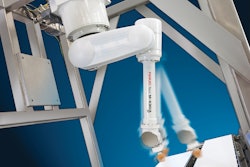
The question I am most often asked by executives is “What warehouse automation solution is best?” But that is not the best question to ask. It suggests a focus on technology, rather than on what will make the business more productive. The trick is to not buy into automation until you establish a solid business case for change based on your business’ needs. And while there is no single “best” solution for everyone, there is one “best” solution for your business.
Consider these three steps when exploring new automation solutions to make sure you get what you expect:
• Focus on the business, not the technology. Before considering any technology, get a clear understanding of the business’ goals and service requirements. Velocity analysis of order and SKU profiles will help you get to the root of the problem, make informed decisions, and develop realistic expectations for productivity improvement.
For example, a client recently asked for help to extend their sorter and add additional lanes. They were having difficulty keeping up with demand and assumed that the sorter was beyond its capacity. But after a thorough analysis of the business, it became clear that the sorter was not the root problem. By taking the focus off the technology and further analyzing the business issue, the client was saved from the expense and frustration of implementing a solution that would not solve the real bottleneck.
• Keep the end in mind. Good project teams start by developing a business case to justify their investment in technology. But once the project is underway, many lose sight of the business justification for the project, as focus shifts to getting the solution up and running.
We have all heard of automation projects that failed to deliver on their promise. A common reason is that the project needed more “end in mind thinking.” Someone on the project team must be tasked with keeping the project team focused on the end goal, through the long and winding road of implementation.
• Don’t get distracted by new and shiny. Don’t discredit technologies that have been around awhile. Even technologies that may not have lived up to their potential initially may have since matured and been proven. It might be worth another look at automation solutions that were abandoned early, but are now more reliable and may work well in your specific situation.
For example, I recently spoke with an executive who was lukewarm about the use of a conventional goods-to-man solution, but very excited about a robotic goods-to-man solution. However, after evaluating his order profiles and performing a SKU analysis, it was clear that investment in robotics could not be justified. The conventional goods-to-man solution was the right answer for this company’s slow moving, low volume items.
It may not be a cutting edge technology that delivers the results you need. But with tight margins and the need to replenish shelves as quickly and inexpensively as possible, low-tech tried and true solutions may be more cost effective.
This issue of Food Logistics explored some exciting automation technologies that could deliver real improvements for your business. But, the best automation solution is the one that is supported by financial analysis and delivers the promised return on your investment. If you are considering an investment in automation technology, ask yourself:
• What problem are we trying to solve with this technology? Do we have a clear understanding of the root cause of the problem or are we just treating symptoms?
• Who will be responsible for keeping our focus on realizing the improvements that justified the technology purchase?
• Have we discounted valid solutions because they are no longer new? Would an older technology be a more cost-effective solution given our order profiles and SKU sets?
If you don’t have answers to these questions, then take a step back and refocus on the business case for change. And, keep an open mind when exploring potential automation solutions. Some of the best solutions may be in the rear view mirror.



















